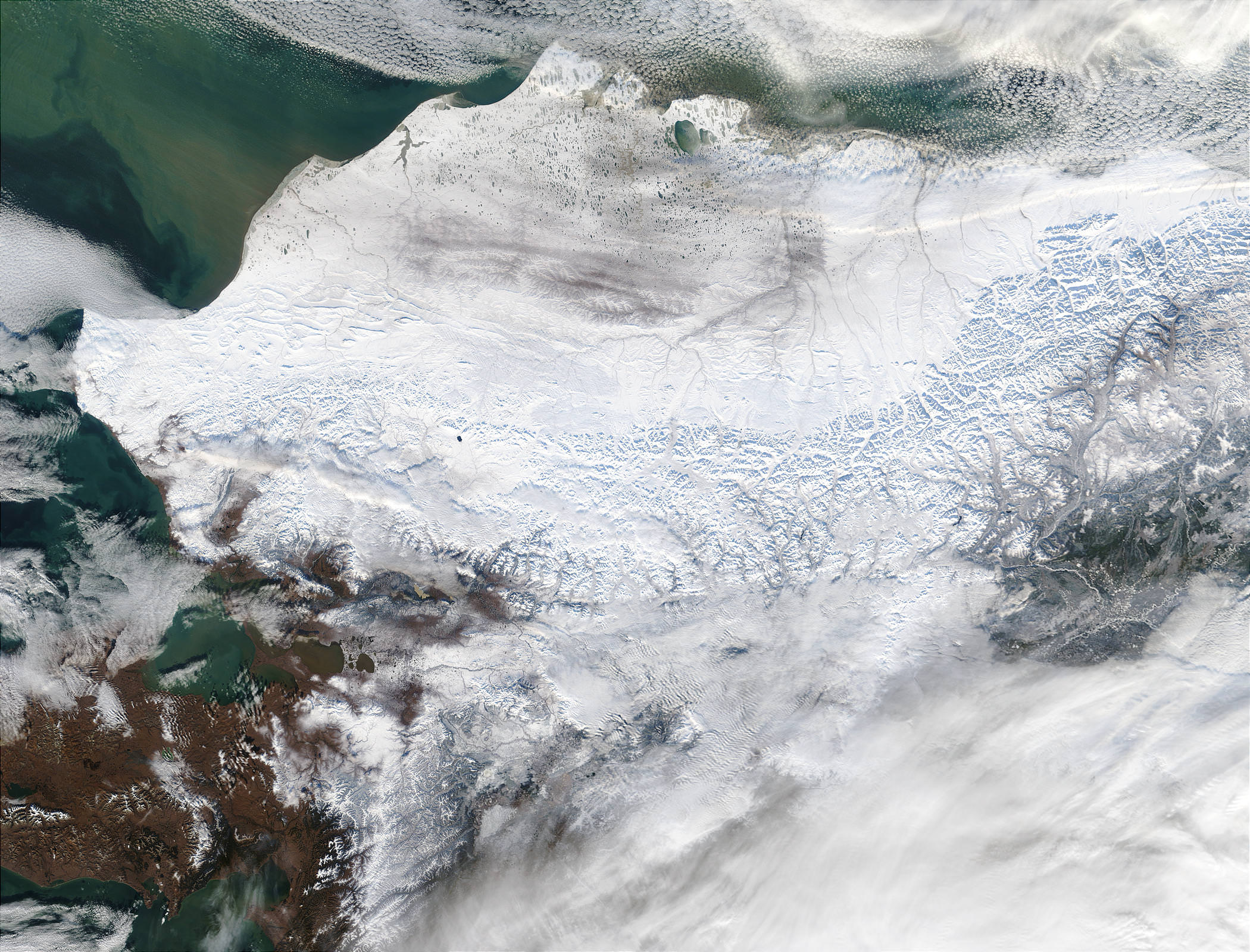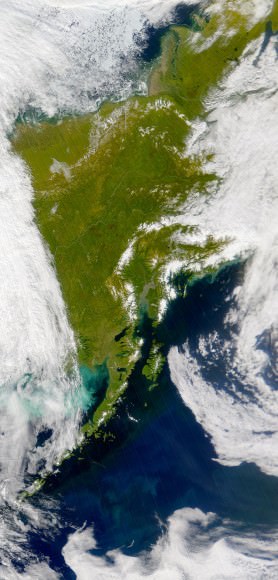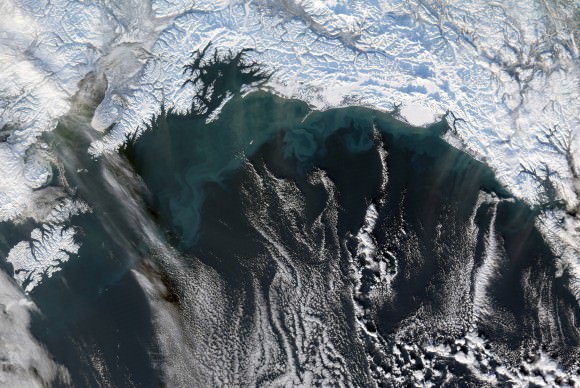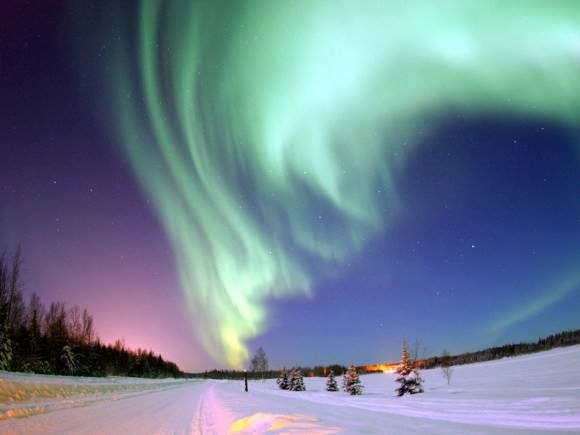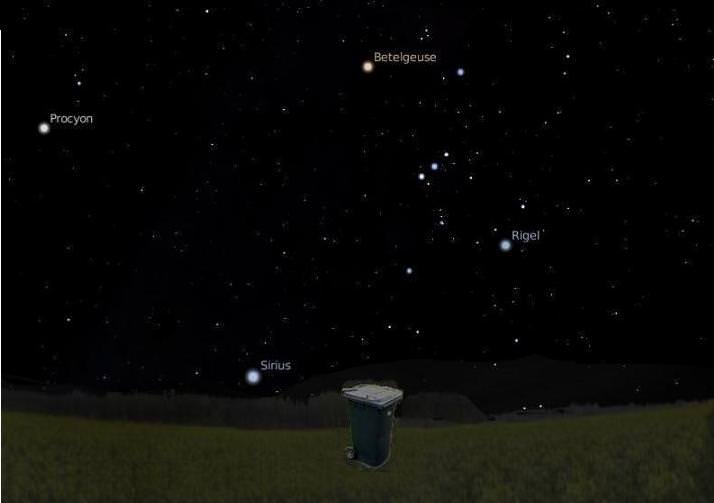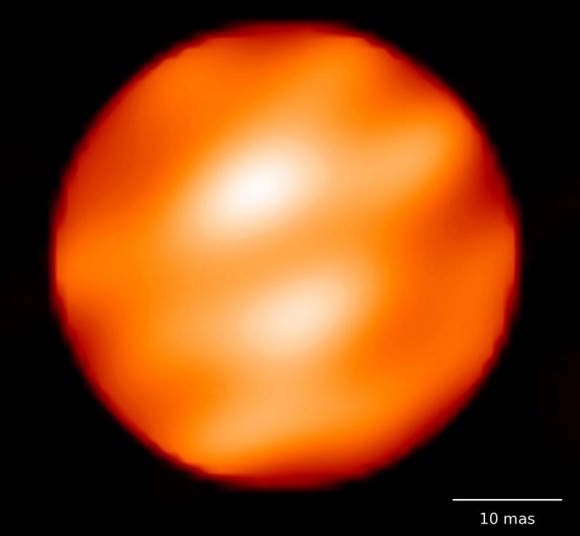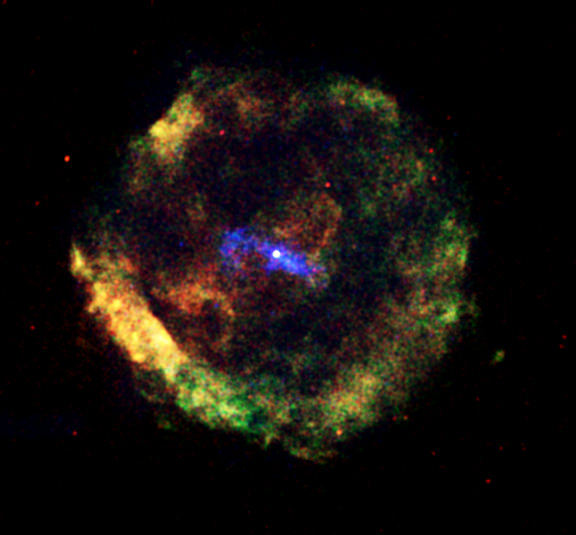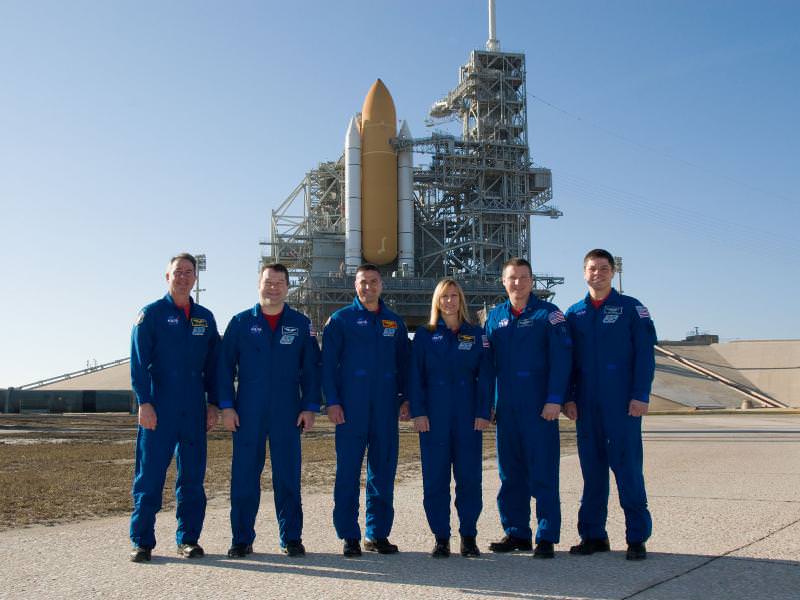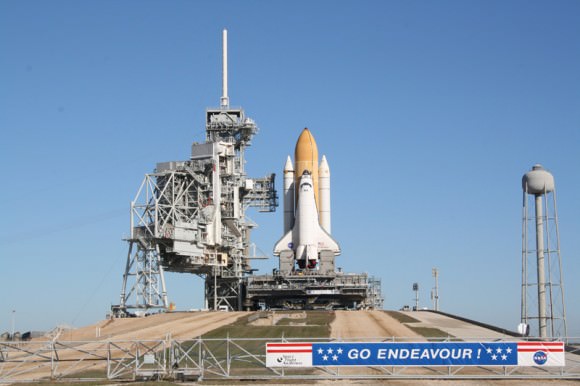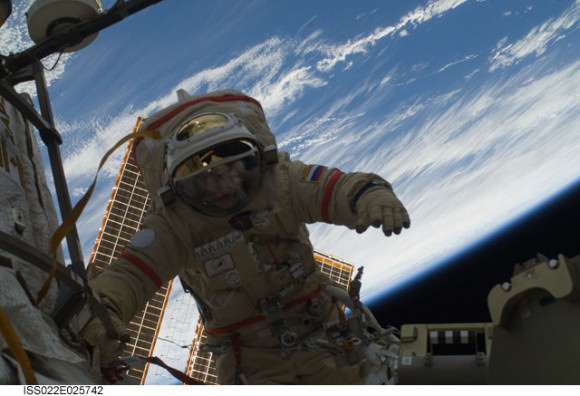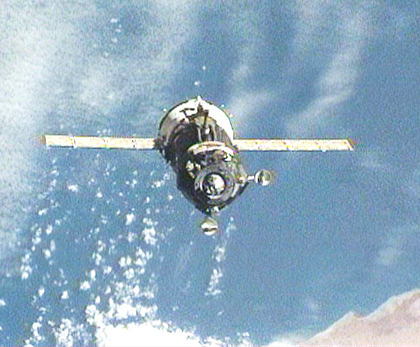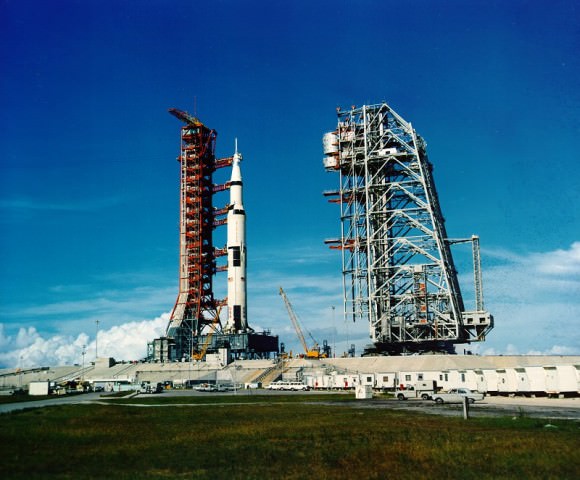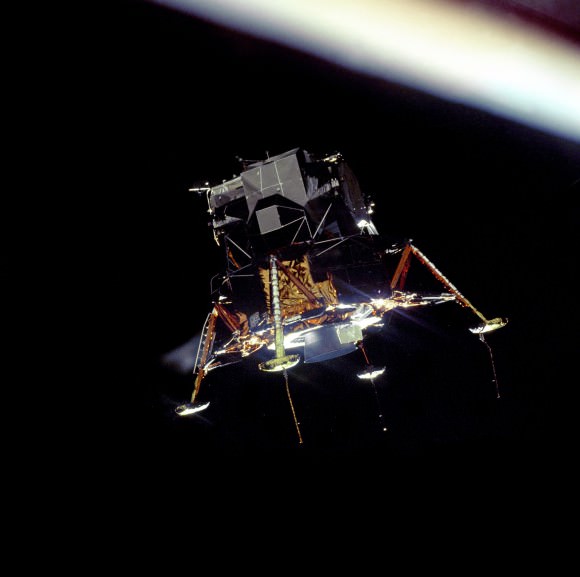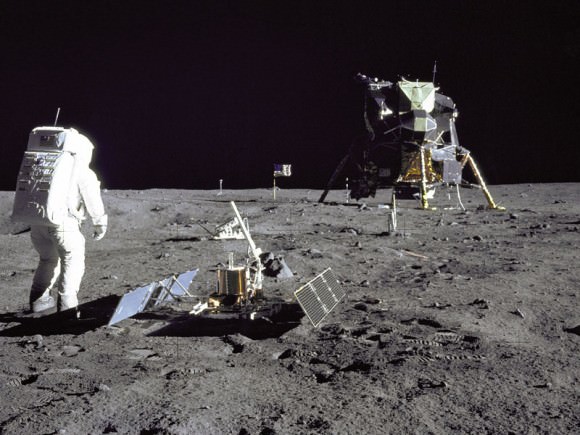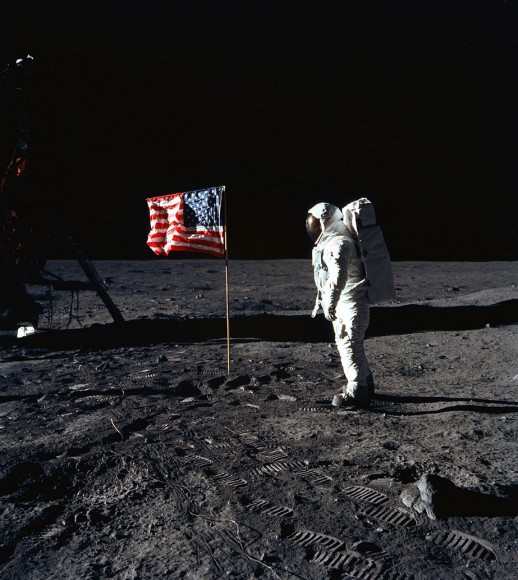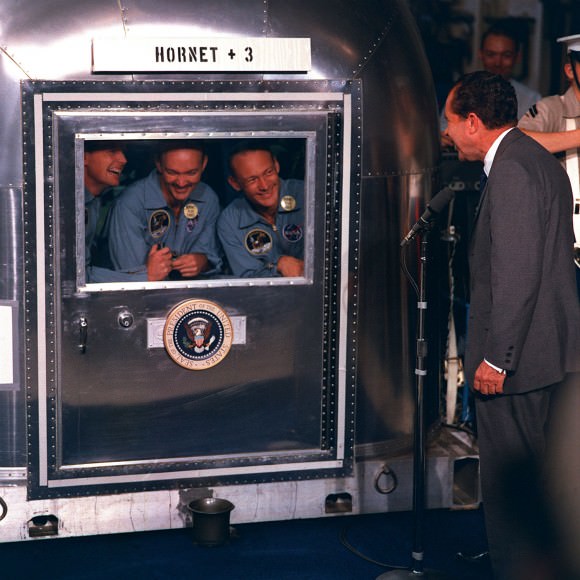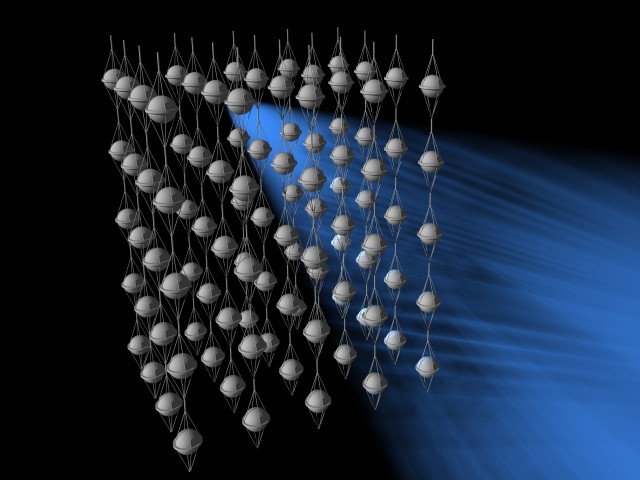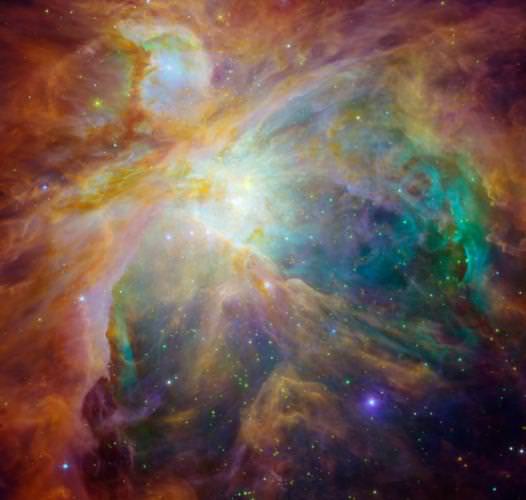Greetings, fellow SkyWatchers! I don’t know about everyone else, but most observations here have been of the big M0. Clouds, clouds and more clouds! Perhaps we’re really in a nebula? However, for those fortunate few that do have clear skies, let’s take a look at what’s happening on the lunar surface each night. And, since we’ve got to deal with a little “Moonlight Sonata”, we’ll also inspect some bright stars and alternative catalog studies to add to your knowledge and pleasure of the night sky! Whenever you are ready, dust off your optics and I’ll meet see you in the backyard….
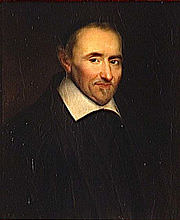 January 22, 2010: Start the astronomical day by observing the 1592 birth on this date of Pierre Gassendi, French scientist, mathematician, philosopher… and the first to use a Galilean telescope to observe a Mercury transit by the projection method. Gassendi was a prodigious observer, known for his humor, and was friends with Cassini, Galileo, Hevelius, and Kepler. His writings included work on falling bodies – a rare coincidence, since the only known piece of ‘‘space junk’’ to ever re-enter our atmosphere and strike a human occurred on the 405th anniversary of his birth!
January 22, 2010: Start the astronomical day by observing the 1592 birth on this date of Pierre Gassendi, French scientist, mathematician, philosopher… and the first to use a Galilean telescope to observe a Mercury transit by the projection method. Gassendi was a prodigious observer, known for his humor, and was friends with Cassini, Galileo, Hevelius, and Kepler. His writings included work on falling bodies – a rare coincidence, since the only known piece of ‘‘space junk’’ to ever re-enter our atmosphere and strike a human occurred on the 405th anniversary of his birth!
 Let’s begin our weekend by taking a look with binoculars at the first quarter Moon and see what we can discover… First repeat our first litany: #1—Mare Crisium, #2—Mare Fecunditatis, and #3—Mare Nectaris. Head north to the huge area of #4, Mare Tranquillitatis, which appears with its irregular borders. Beneath the smooth appearing regolith, the ‘‘Tranquil Sea’’ basin is cracked and overlapped by accompanying basins – lava spilling and flowing into other areas as large as the Kimberley region of Australia, or three times larger than England! Now, #5 Mare Serenitatis, the ‘‘Sea of Serenity.’’ Home to a violent past, its outer edges appear darker than the interior—mute testimony to continued seismic and volcanic activity allowing the basin to fill with lava more than once. Take a telescopic look at the rilles adorning this lunar desert, whose surface is the size of Italy. Then go north for #6, Mare Frigoris, the ‘‘Sea of Cold.’’ Congratulations on another learning exercise and if you’re thinking about how cold you are, think about how cold you’d be if you were observing Earth from Mare Frigoris!
Let’s begin our weekend by taking a look with binoculars at the first quarter Moon and see what we can discover… First repeat our first litany: #1—Mare Crisium, #2—Mare Fecunditatis, and #3—Mare Nectaris. Head north to the huge area of #4, Mare Tranquillitatis, which appears with its irregular borders. Beneath the smooth appearing regolith, the ‘‘Tranquil Sea’’ basin is cracked and overlapped by accompanying basins – lava spilling and flowing into other areas as large as the Kimberley region of Australia, or three times larger than England! Now, #5 Mare Serenitatis, the ‘‘Sea of Serenity.’’ Home to a violent past, its outer edges appear darker than the interior—mute testimony to continued seismic and volcanic activity allowing the basin to fill with lava more than once. Take a telescopic look at the rilles adorning this lunar desert, whose surface is the size of Italy. Then go north for #6, Mare Frigoris, the ‘‘Sea of Cold.’’ Congratulations on another learning exercise and if you’re thinking about how cold you are, think about how cold you’d be if you were observing Earth from Mare Frigoris!
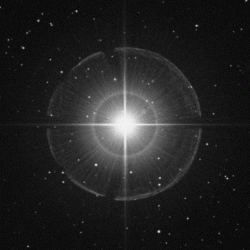 Now open your eyes and let’s head for the star on Orion’s western shoulder, Gamma. Named Bellatrix, the 243 light-year distant ‘‘Amazon’’ is not actually part of the Orion association. Gamma is a foreground star and is the hottest of its type visually observable. Historically this star was used as a luminosity standard to compare with other stars to check for variability. But it was later discovered that Bellatrix itself is an eruptive variable, changing in luminosity by a few percent over time. It ranges in magnitude from 1.59 to 1.64. Sure, it’s a minor change – but still a change! There are a couple of types of eruptive variable stars, some with a broad range of increase in luminosity and a fixed time line. These types of eruptive variables include flare stars – very faint stars on the main sequence; novae and dwarf novae – which are caused by the sharing of material between evolved stars in binary systems; and supernovae – the violent and uber brilliant end for several classes of star.
Now open your eyes and let’s head for the star on Orion’s western shoulder, Gamma. Named Bellatrix, the 243 light-year distant ‘‘Amazon’’ is not actually part of the Orion association. Gamma is a foreground star and is the hottest of its type visually observable. Historically this star was used as a luminosity standard to compare with other stars to check for variability. But it was later discovered that Bellatrix itself is an eruptive variable, changing in luminosity by a few percent over time. It ranges in magnitude from 1.59 to 1.64. Sure, it’s a minor change – but still a change! There are a couple of types of eruptive variable stars, some with a broad range of increase in luminosity and a fixed time line. These types of eruptive variables include flare stars – very faint stars on the main sequence; novae and dwarf novae – which are caused by the sharing of material between evolved stars in binary systems; and supernovae – the violent and uber brilliant end for several classes of star.

Use binoculars to spot a fainter star about a half degree northeast and say hello to alternative catalog study Dolidze 21 (RA 05 26 50 Dec +06 58 30). This loose association of stars contains a few solar types, and many stars fainter than small optics can resolve – an unusual observation for your notes. Here we have what is considered a “poor” open cluster. Not because it isn’t nice – but because it isn’t populous. It is home to around 20 or so low wattage stars of mixed magnitude with no real asterism to make it special.
 January 23, 2010: On the Moon the clockwork movement of the terminator has slowly marched across the surface, revealing more lunar landscape and its 12 maria for exploration. While it ticks along the ecliptic, Luna is passing by other orbiting bodies. Want a challenge? Then we’ll pass on the Moon and aim binoculars towards the constellation of Leo and take on an asteroid! Although Vesta isn’t as exciting, now is a good time to practice observing these rocky Solar System bodies. Spinning completely on its axis about every 5.5 hours and spanning 525 kilometers, this Arizona-sized minor planet is a treat for amateurs because its surface is highly reflective. At times Vesta can reach near unaided-eye visibility, but moonlight steals away fainter objects from easy view. Chances are very good that even in a starry field Vesta will be one of the brightest points visible. See if you can discover Vesta tonight!
January 23, 2010: On the Moon the clockwork movement of the terminator has slowly marched across the surface, revealing more lunar landscape and its 12 maria for exploration. While it ticks along the ecliptic, Luna is passing by other orbiting bodies. Want a challenge? Then we’ll pass on the Moon and aim binoculars towards the constellation of Leo and take on an asteroid! Although Vesta isn’t as exciting, now is a good time to practice observing these rocky Solar System bodies. Spinning completely on its axis about every 5.5 hours and spanning 525 kilometers, this Arizona-sized minor planet is a treat for amateurs because its surface is highly reflective. At times Vesta can reach near unaided-eye visibility, but moonlight steals away fainter objects from easy view. Chances are very good that even in a starry field Vesta will be one of the brightest points visible. See if you can discover Vesta tonight!
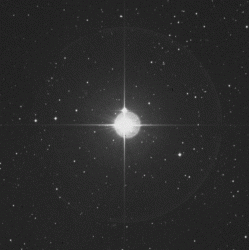 Looking for an unusual star to spark your imagination? Then set your sights on the westernmost star of Orion’s ‘‘belt’’ – Mintaka. Like clockwork, astronomical objects can also keep incredibly accurate time. Located around 1,500 light-years away, Delta Orionis is a multiple star system: its companion star is almost equal in brightness and orbiting at a clockwork rate of 5.7325 days from only 8 million kilometers away. In astronomical terms, these two white-hot suns are nearly touching! Mintaka is a prime example of a spectroscopic binary star – a pair so close they are only detectable by changes in the stars’ spectra. Its stationary spectral lines proved the existence of interstellar matter! Take a closer look, and Delta Orionis will reveal a visible 6.7 magnitude companion to its north – a challenge well suited to small optics.
Looking for an unusual star to spark your imagination? Then set your sights on the westernmost star of Orion’s ‘‘belt’’ – Mintaka. Like clockwork, astronomical objects can also keep incredibly accurate time. Located around 1,500 light-years away, Delta Orionis is a multiple star system: its companion star is almost equal in brightness and orbiting at a clockwork rate of 5.7325 days from only 8 million kilometers away. In astronomical terms, these two white-hot suns are nearly touching! Mintaka is a prime example of a spectroscopic binary star – a pair so close they are only detectable by changes in the stars’ spectra. Its stationary spectral lines proved the existence of interstellar matter! Take a closer look, and Delta Orionis will reveal a visible 6.7 magnitude companion to its north – a challenge well suited to small optics.
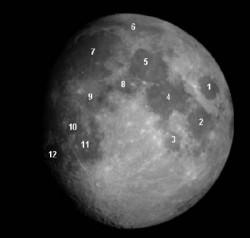 January 24, 2010: Tonight, let’s take time to work toward learning more major lunar features by sailing across 12 seas. The key to learning is to repeat these again and again: #1: Mare Crisium, #2: Mare Fecunditatis, #3: Mare Nectaris, #4: Mare Tranquillitatis, #5: Mare Serenitatis, and #6: Mare Frigoris. Excellent work! Now let’s go have a closer look at #7: Mare Imbrium. Identical in size to Saudi Arabia and about one-fourth the size of the United States, the ‘‘Sea of Rains’’ basin was formed 38 million years ago during a dramatic impact causing a Moon-wide series of faults. The massive strike shattered the lithosphere to a depth of 100 kilometers, embedding the impactor as a mascon. Seismic waves traveled through the interior—re-shaping the far side and creating magnetic anomalies—while the basin floor rebounded and flung ejecta 800 kilometers away. Over 500 million years, at least three areas of distinct lava flow poured into the impact basin (the oldest and largest about 1,200 kilometers long), far out-producing any earthly volcano. The youngest and smallest is about 400 kilometers in length, matching our terrestrial Columbia River Flood Basalt, an area stretching from Idaho to the Pacific Ocean! Now, here are some more to learn: #8: Mare Vaporum, #9: Mare Insularum, #10: Mare Cognitum, #11: Mare Nubium, and #12: Mare Humorum. Remember: repeat, repeat, repeat!
January 24, 2010: Tonight, let’s take time to work toward learning more major lunar features by sailing across 12 seas. The key to learning is to repeat these again and again: #1: Mare Crisium, #2: Mare Fecunditatis, #3: Mare Nectaris, #4: Mare Tranquillitatis, #5: Mare Serenitatis, and #6: Mare Frigoris. Excellent work! Now let’s go have a closer look at #7: Mare Imbrium. Identical in size to Saudi Arabia and about one-fourth the size of the United States, the ‘‘Sea of Rains’’ basin was formed 38 million years ago during a dramatic impact causing a Moon-wide series of faults. The massive strike shattered the lithosphere to a depth of 100 kilometers, embedding the impactor as a mascon. Seismic waves traveled through the interior—re-shaping the far side and creating magnetic anomalies—while the basin floor rebounded and flung ejecta 800 kilometers away. Over 500 million years, at least three areas of distinct lava flow poured into the impact basin (the oldest and largest about 1,200 kilometers long), far out-producing any earthly volcano. The youngest and smallest is about 400 kilometers in length, matching our terrestrial Columbia River Flood Basalt, an area stretching from Idaho to the Pacific Ocean! Now, here are some more to learn: #8: Mare Vaporum, #9: Mare Insularum, #10: Mare Cognitum, #11: Mare Nubium, and #12: Mare Humorum. Remember: repeat, repeat, repeat!
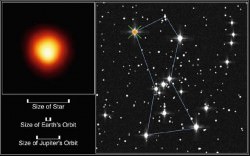 Now turn your eyes towards Orion and its Alpha star – Betelgeuse. Early in the evening, Orion the ‘‘Hunter’’ is beginning its journey across the night sky. Alpha stands out as an orangish star in the northeastern corner. It is a giant among stars! Betelgeuse has a long literary history and was one of the most massive stars known. In the mid-1800s, John Herschel observed that Betelgeuse varied in brightness, its light intensity changing by as much as a magnitude in under 6 years. The red giant is continually contracting and expanding to a formidable size – one that would fill the orbit of Jupiter around our own small star. But, it’s not alone…. Alpha also has four companion suns! Estimated to be 6 million years old, the light you see tonight from Betelgeuse left the
Now turn your eyes towards Orion and its Alpha star – Betelgeuse. Early in the evening, Orion the ‘‘Hunter’’ is beginning its journey across the night sky. Alpha stands out as an orangish star in the northeastern corner. It is a giant among stars! Betelgeuse has a long literary history and was one of the most massive stars known. In the mid-1800s, John Herschel observed that Betelgeuse varied in brightness, its light intensity changing by as much as a magnitude in under 6 years. The red giant is continually contracting and expanding to a formidable size – one that would fill the orbit of Jupiter around our own small star. But, it’s not alone…. Alpha also has four companion suns! Estimated to be 6 million years old, the light you see tonight from Betelgeuse left the
star around the time Nostradamus was making his predictions. Should it go supernova tomorrow, it would be almost another half century before this spectacular sight would be seen in our night sky!
Until next week? Ask for the Moon… But keep on reaching for the stars!
This week’s awesome images are an historical photo of Gassendi, lunar images we done by Greg Konkel. Stellar and cluster images are from Palomar Observatory, courtesy of Caltech and the Betelgeuse diagram is courtesy of NASA. We thank you so much!


